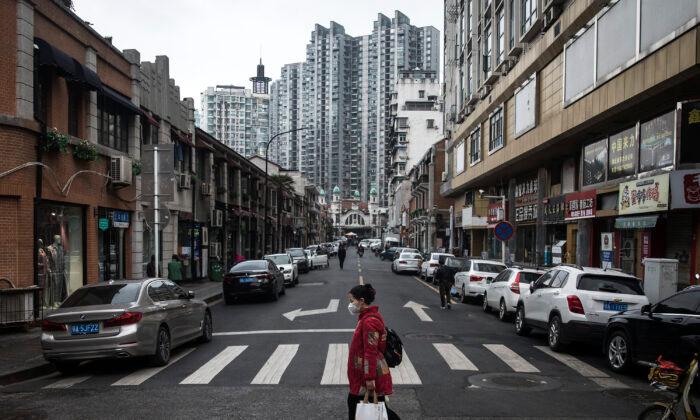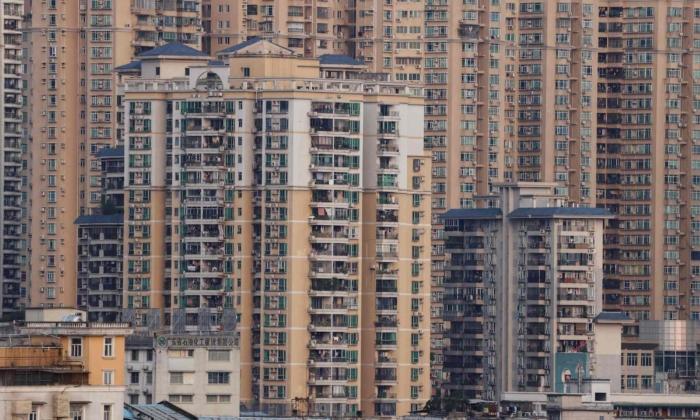Many of China’s local authorities are staring down a severe fiscal challenge this year.
The typically robust real estate sector has instead been a big disappointment. The country’s ongoing property market slump has hit local government revenues. We’ve previously pointed out land sale revenues as being a major component of local budgets, and China’s contemplated rollout of personal real estate taxes is unlikely to give municipalities a major windfall.
China’s macroeconomic environment has become a huge drag. The central government in Beijing is looking to implement more tax cuts to offset slowing economic growth and promote small business growth. This is another drain on local government resources, but it’s necessary, given that China’s COVID-19 restrictions continue to hold back economic activity across the nation. On top of that, the already high debt burden of many municipalities will prevent them from accessing debt financing.
“The country will intensify tax-deduction efforts and launch targeted support measures,” a February report by state-run media outlet Xinhua reads.
The report claims that the measure will increase innovation and spur growth in private enterprises. On the other hand, more than a third of Chinese provinces are forecasting that the increase in expenditures will exceed the rise in revenues this year.
All of this means that the fiscal health of China’s local governments will pose a significant risk to the Chinese Communist Party’s (CCP) desire for stability heading into this fall’s key National Congress.
Beijing will need to step up its support to regional governments in 2022. Liu Kun, China’s finance minister, said in early February that “transfer payments to regional governments will increase by a large margin” in 2022. For context, in 2021, Beijing gave out more than 8 trillion yuan ($1.2 trillion) in transfers to regional governments.
Beijing has also been stepping up support for municipalities having trouble paying their retirees. It’s a big obligation that will deepen, given China’s rapidly aging population and relatively low birth rates.
Funding pensions isn’t a new problem for Chinese municipalities, but it’s getting worse. Beijing has been working to funnel several provincial pension plans into a national one, so that funds from wealthier regions can be routed to subsidize poorer regions.
In 2018, an adjustment fund for pension funds was created by Beijing to redistribute funding to cover such shortfalls, and the CCP is looking to expand this program further.
Which areas are scheduled to take in transfer payments? The northeastern industrial provinces such as Heilongjiang, and poorer, more rural northwestern provinces such as Gansu are prime candidates.
The indebtedness of local governments has also been a major risk.
In January, Beijing allowed Guizhou, a relatively poor and mountainous province in China’s southwest, to delay interest repayments and enter into restructuring for existing debts.
The CCP is stepping up regulatory oversight into so-called local government funding vehicles (LGFV), which are off-balance-sheet entities used to raise financing for local governments, often for infrastructure projects.
These vehicles were often used to fund projects for political achievements rather than on their economic merits. In 2017, Beijing’s national auditors found that some municipalities and officials went ahead with LGFV-funded projects without the means or intention to repay the debt.
Who are the lenders to such vehicles? China’s commercial banks are the biggest cohort, which means municipalities’ financial difficulties are also threatening the health of the Chinese banking sector.
Being off-balance-sheet, the true magnitude of LGFV financing is often unknown. South China Morning Post estimates that, as of Dec. 31, 2021, more than 3,000 LGFV entities are outstanding. In terms of outstanding balances owed, estimates range from 20 percent to up to 44 percent of China’s gross domestic product—the equivalent of 45 trillion yuan, or more than $7 trillion.
Those are truly shocking figures, suggesting that China’s local government debt woes are just the beginning.






Friends Read Free